Results 8,471 to 8,480 of 12096
Thread: Anandtech News
-
-
08-07-18, 05:35 PM #8472
Anandtech: Flash Memory Summit 2018, Yangtze Memory Technology Keynote Live Blog: Unl
The final talk of this session is from Yangtze Memory Technology (YMTC). We published their announcement this week, but they have set a very interesting talk for the show. The talk is called 'Unleasing 3D NAND's Potential with an Innovative Architecture'.
More...
-
08-08-18, 07:32 AM #8473
Anandtech: Qualcomm Reveals The Snapdragon 670 Platform: Dual Big Cores + Adreno 615
Today Qualcomm is announcing a new entry in the 600-series mid-range line-up. In a surprise move, the new Snapdragon 670 is a direct successor to the Snapdragon 660, and is intended to fill the gap between the 600-series and the newly introduced Snapdragon 710.
As a quick refresher, the Snapdragon 710 was released this year as the first entry in the new Snapdragon 700 tier of SoCs. The 700 series is intended to sit between the existing 600 and 800 series, offering many of Qualcomm's flagship features at a lower cost, something that's been in demand from handset vendors who are looking at putting together high-performance phones for more price-conscientious buyers.
The new Snapdragon 670, in turn, seems to be directly derived from the 710, as the two are so close in specifications that at first glance it's easy to miss the differences.
The Snapdragon 670 uses the same CPU configuration as found on the Snapdragon 710. The new Kryo 360 performance and efficiency cores are based on Cortex A75 and A55 IP designs and come in a configuration of 2x big cores at 2.0GHz and 6x small cores at 1.7GHz. This is a slight 200MHz downgrade from the 710’s 2.2GHz cores. It’s to be noted that as a direct successor to the 660, we’re losing two big cores, so multithreaded performance might not see much of an upgrade on the new chip.Qualcomm Snapdragon Upper Mid-Range SoCs SoC Snapdragon 660 Snapdragon 670 Snapdragon 710 CPU 4x Kryo 260 (CA73)
@ 2.2GHz
4x Kryo 260 (CA53)
@ 1.8GHz2x Kryo 360 (CA75)
@ 2.0GHz
6x Kryo 360 (CA55)
@ 1.7GHz2x Kryo 360 (CA75)
@ 2.2GHz
6x Kryo 360 (CA55)
@ 1.7GHzGPU Adreno 512 Adreno 615 Adreno 616 DSP Hexagon 680 Hexagon 685 ISP/
CameraSpectra 160 ISP
24MPSpectra 250 ISP
25MP single / 16MP dualSpectra 250 ISP
32MP single / 20MP dualMemory 2x 16-bit @ 1866MHz
LPDDR4
14.9GB/s2x 16-bit @ 1866MHz
LPDDR4X
14.9GB/s
1MB? system cacheIntegrated Modem Snapdragon X12 LTE
(Category 12/13)
DL = 600Mbps
3x20MHz CA, 256-QAM
UL = 150Mbps
2x20MHz CA, 64-QAMSnapdragon X12 LTE
(Category 15/13)
DL = 600Mbps
3x20MHz CA, 256-QAM
UL = 150Mbps
2x20MHz CA, 64-QAMSnapdragon X15 LTE
(Category 15/13)
DL = 800Mbps
3x20MHz CA, 256-QAM
UL = 150Mbps
2x20MHz CA, 64-QAMEncode/
Decode2160p30, 1080p120
H.264 & H.2652160p30, 1080p120
H.264 & H.2652160p30, 1080p120
H.264 & H.265
10-bit HDR pipelinesMfc. Process 14nm LPP 10nm LPP
The GPU is also a new Adreno 6xx generation design in the form of a 615 implementation. Obviously we don’t know much at all from just the model number, but it being numerically inferior to the S710’s Adreno 616, performance should be slightly less. Qualcomm promises a performance increase of 25% over the Snapdragon 660, while the 710 promised a 35% increase in the same comparison.
The 670’s DSP and ISP are identical in terms of design to the 710’s – however they’re run at a lower clockspeed and subsequently support a lower maximum resolution.
One of the other feature shavings is that the 670 doesn’t support 4x4 MIMO on the modem, and thus the X12 modem has a lower download speed of up to 600Mbps versus 800Mbps on the 710.
Finally, the other seemingly important discrepancy here is the lack of 10-bit display pipelines and accompanying support on the part of the encoders, so HDR capture isn’t a feature on the 670. The display controller also is less capable and only able to drive FHD+ resolutions as opposed to the QHD+ capabilitites of the 710.
Like the 710, the 670 is manufactured on a newer 10LPP process node, so it should benefit from the same power efficiency gains as its higher end sibling.
The Snapdragon 670 is a surprising chipset in terms of its positioning because it’s not that far off from the Snapdragon 710. When briefed about the new model the first thing I thought was if this would be actually just a lower binned 710 – but Qualcomm confirmed that this is indeed a "different design". The market at these lower ranges is extremely competitive, and while the 670 does seemingly allow itself to shed some feature, I have to wonder just exactly how much silicon is saved as well as die area reduced in order for Qualcomm to decide that it’s actually worth to design and tape out a product to fill this lower price point under the 710. Seemingly, customers must have had demand for it otherwise it wouldn’t exist, and in a sense, it shows Qualcomm’s strength in terms of being customer demand driven and adapting fast to the market.
The last advantage of the Snapdragon 670 in this aspect is that it’s pin and software compatible to the Snapdragon 710, allowing vendors to choose between them with minimal engineering efforts.
The Snapdragon 670 is currently available and commercial devices are expected within the coming months.
Related Reading- Qualcomm Announces Snapdragon 710 Platform
- Qualcomm Announces Snapdragon 700 Series Platform: Carving Out A Niche for Sub-Premium
- The Snapdragon 845 Performance Preview: Setting the Stage for Flagship Android 2018
- Qualcomm Announces Snapdragon 660 & 630 Mobile Platforms: Better Connectivity, Camera, & Compute at 14nm
More...
-
08-08-18, 09:04 AM #8474
Anandtech: AMD Releases Radeon Pro Software Enterprise Edition 18.Q3 WHQL
Today, AMD released Radeon Pro Software Enterprise Edition 18.Q3 WHQL, on their usual quarterly pace. Given that the last release brought in Windows 10 April 2018 Update support, and the one before that introduced Adrenalin Edition to enterprise, 18.Q3 is much more low-key, focusing on the usual bug fixes, performance optimizations, and virtualization updates.
18.Q3 does bring a manual fan control setting, which is claimed to provided up to twice the performance over default settings on certain workloads without affecting warranty. Being pro video cards, Found under the Global Tuning tab, ‘Fan Control’ will adjust fan speeds of different GPUs. AMD also notes general year-on-year performance improvements in professional applications, citing a 53% speedup in Audodesk 3ds Max and 33% speedup in Siemens NX. And as far as stability goes, AMD is sure to cite their commissioned driver stability report by QA Consultants from last month, based on CRASH testing. In that instance, for AMD Pro cards 18.Q2 was used, and more details can be found in the report.
As for AMD’s MxGPU, their hardware-based SR-IOV virtualized graphics solution, 18.Q3 is coupled with an updated March production-level host driver for Citrix XenServer MxGPU, while XenDesktop and XenApp guest drivers have been updated with 18.Q3 binaries for cloud-deployed 64-bit Windows 10 and 7 platforms. The packages and compatibility notes can be found on AMD’s Citrix Pro Driver page.
Similarly, VMware vSphere ESXi 6.5 guest drivers for MxGPU and passthrough have been updated with 18.Q3 binaries for cloud-deployed 64-bit Windows 10 and 7 platforms. Meanwhile, their Guest Interface Manager (GIM) open source KVM host OS driver remains available on GitHub as a technical preview and the guest drivers have not been updated since Adrenalin Pro 17.12.2.
Bugfixes and Resolved Issues
Wrapping things up, 18.Q3 comes with a multitude of fixes:
- Corruption may be seen on model with change in Anti-aliasing modes with Dassault ICEM Surf.
- Display issues may be observed while running Nuke benchmark on AMD FirePro W8100 and AMD FirePro W9100.
- Intermittent display difficulties with certain models in Siemens Femap with Radeon Pro WX 9100 may be observed.
- Rhino 6 may hang when doing rendered mode on a specific dataset.
- Possible hangs with Rhino 6.5 when doing rendered mode on specific dataset.
- Screen corruption may be observed with Smode Studio.
- System may hang when displaying large models in shaded mode with Rhino.
- CorelDRAW may show slow performance when opening large files.
- Memory leak may be observed with “Vega”-based hardware on Windows 7.
- May experience lagging in Future Viewport with Cinema 4D.
- Some display issues may be seen with Sparse Texture High Level Mipmap in Dassault Systèmes CATIA.
- Unexpected behaviour may be observed when running Intergraph SmartPlant FreeView on AMD FirePro 7150 with Citrix XenDesktop.
Known Issues
AMD notes that Multi-GPU Eyefinity Pro on Windows 10 is not currently supported on any hardware for 18.Q3.
- Faded circle may be seen along the detailed view of an assembly while using Dassault Systèmes Solidworks.
- Some Viewport corruption may be observed while using Blender.
- Application crashes may be observed when using ‘sliced geometry’ feature in Notch.
- User may experience crashes may be observed with “Vega”-based hardware while using Siemens FEMAP.
- Some application crashes may be observed with Solidworks 2017/2018 on Windows 7.
- Application crashes may be observed with Solidworks 2015 APC.
- [VDI-specific] VM may disconnect when upgrading the driver and unable to connect until reboot.
- [VDI-specific] The energy subtest of SPECviewperf 12.1.1 may not complete in an MxGPU environment.
- [VDI-specific] Toggling between full screen and windowed mode on Citrix XenDesktop may lead to temporary viewport corruption.
- [VDI-specific] On Windows 7, a Catalyst Control Center error may be observed when resizing Citrix XenDesktop window.
Driver Options is not available with multi-GPU configurations, with the Radeon Pro Duo Polaris, and for mobile platforms.
The updated drivers for AMD’s professional workstation GPUs are available online at the AMD’s professional graphics driver download page. Details on AMD’s Radeon Pro desktop workstation graphics cards can be found here. More information on this update and further issues can be found in the Radeon Pro Software for Enterprise 18.Q3 release notes.
New Radeon Pro Software Enterprise Editions are released on the 2nd Wednesday of the 2nd month of the quarter. The next release will follow on 11/14/18 (18.Q4).
More...
-
08-08-18, 09:50 AM #8475
Anandtech: ASUS Adds Support for 9th Gen Core CPUs to Their Intel 300-Series Motherbo
ASUS on Tuesday released new BIOS versions for Intel’s 300-series motherboards, adding support for Intel’s not-so-secret upcoming Core i3/i5/i7 9000-series processors. With the addition of ASUS, now all of the "Big 3" motherboard manufacturers have publicly added support for Intel’s future CPUs to their existing platforms.
At present, 64 motherboards from ASUS based on Intel’s Z370, H370, Q370, B360, and H310 chipsets support the forthcoming Intel’s 9th Gen Core i processors. This is the longest list of mainboards that already support the future CPUs among all top makers of motherboards. All the aforementioned motherboards also work with Intel’s Coffee Lake CPUs with up to six cores that use LGA1151 v2 packaging.
Intel’s 9th Gen Core processors are projected to be announced in the coming weeks and hit the market shortly after that. Intel has not formally confirmed the chips, but it is expected that the new CPUs will use Intel’s Coffee Lake/Kaby Lake microarchitecture, will have up to eight cores, and will be produced using a 14 nm process technology.
Buy ASUS ROG Maximus X Hero on Amazon.comASUS' Motherboards Supporting Intel's 9th Gen Core CPUs Chipset Model Intel Z370 ROG MAXIMUS X FORMULA
ROG MAXIMUS X CODE
ROG MAXIMUS X APEX
ROG MAXIMUS X HERO (WI-FI AC)
ROG MAXIMUS X HERO
ROG STRIX Z370-E GAMING
ROG STRIX Z370-F GAMING
ROG STRIX Z370-H GAMING
ROG STRIX Z370-G GAMING
ROG STRIX Z370-G GAMING (WI-FI AC)
PRIME Z370-A
TUF Z370-PRO GAMING
TUF Z370-PLUS GAMING
PRIME Z370-P
ROG STRIX Z370-I GAMINGIntel H370 ROG STRIX H370-F GAMING
ROG STRIX H370-I GAMING
TUF H370-PRO GAMING (WI-FI)
TUF H370-PRO GAMING
PRIME H370-A
PRIME H370-PLUS
PRIME H370M-PLUSIntel Q370 PRIME Q370M-C Intel B360 ROG STRIX B360-H GAMING/OPTANE
ROG STRIX B360-H GAMING
ROG STRIX B360-F GAMING
ROG STRIX B360-G GAMING
ROG STRIX B360-I GAMING
TUF B360-PRO GAMING (WI-FI)
TUF B360-PRO GAMING
TUF B360-PLUS GAMING
TUF B360-PLUS GAMING S
TUF B360M-E GAMING
TUF B360M-PLUS GAMING
TUF B360M-PLUS GAMING S
TUF B360M-PLUS GAMING/BR
PRIME B360-PLUS
PRIME B360M-A
PRIME B360M-C
PRIME B360M-D
PRIME B360M-K
CSM PRO-E3
EX-B360M-V
EX-B360M-V3
EX-B360M-V5Intel H310 TUF H310-PLUS GAMING
PRIME H310-PLUS
TUF H310M-PLUS GAMING
TUF H310M-PLUS GAMING/BR
PRIME H310M-A
PRIME H310M-C
PRIME H310I-PLUS
PRIME H310M-E/BR
PRIME H310M-E
PRIME H310M-K
PRIME H310M-D
PRIME H310T
CSM PRO-E1
PRIME H310T2
EX-H310M-X
EX-H310M-V3
PRIME H310M-A R2.0
PRIME H310M-K R2.0
PRIME H310M-E R2.0
Related Reading:
- GIGABYTE Adds Support for Intel’s 9th Gen Core Processors to Existing Motherboards
- MSI Z370 Motherboards Now Support Intel’s 9th Gen Core CPUs
- Analyzing Z370 for Intel's 8th Generation Coffee Lake: A Quick Look at 50+ Motherboards
- Intel 8th Generation and 9th Generation Processor Lists Leaked: Coffee Lake Refresh?
- Intel Outs Z390 & X399 PCHs for Cannon Lake & Coffee Lake CPUs
- Intel Documents Point to AVX-512 Support for Cannon Lake Consumer CPUs
- Intel Officially Reveals Post-8th Generation Core Architecture Code Name: Ice Lake, Built on 10nm+
- ASUS Publishes List of Upcoming Intel Z390-Based Motherboards
Gallery: ASUS’ Intel 300-Series Motherboards Now Support 9th Gen Core i CPUs

More...
-
08-08-18, 10:57 AM #8476
Anandtech: Intel Datacenter Summit 2018 Live Blog
We're live here at Intel HQ in Santa Clara for the company's 2018 Datacenter Summit. The most lucrative part of Intel's business, the company is looking to pivot entirely from being PC-centric to what the company calls "Data-cetric", meaning an even greater focus on server (Xeon) processors, as well as things like non-volatile memory, compute accelerators, and FPGAs. This event, in turn, serves two purposes for Intel: reassure investors that Intel is on the right track for continued growth, and to outline the technologies and products that will get them there.
More...
-
08-08-18, 10:57 AM #8477
Anandtech: Intel’s Crimson Canyon NUCs with Cannon Lake CPU & Radeon dGPU Available f
SimplyNUC, a retailer specializing on SFF PCs, has started to take pre-orders for Intel’s NUC8i3CYSM and NUC8i3CYSN ultra-compact form-factor PCs (codenamed "Crimson Canyon"), which are based on Intel’s Cannon Lake processors. The new systems are outfitted with AMD’s discrete Radeon 540 graphics processor and are the first Intel NUCs to feature a fully discrete GPU on a separate chip. The retailer belongs to Intel’s Platinum Technology Providers, so the pre-sales are all but official confirmation of the products and their specificaitons.
The Intel NUC8i3CY-series UCFF PCs come in traditional 4.6-inch × 4.4-inch form-factor and are based on Intel’s dual-core Core i3-8121U processor accompanied by AMD’s Radeon 540 dGPU (codenamed Lexa, based on Polaris architecture, featuring 512 SPs) with 2 GB of GDDR5 memory. The systems come with 4 GB or 8 GB of LPDDR4-2666 memory, all of which is soldered down. By default, the NUC8i3CY-series are equipped with 1 TB SATA hard drive, but there is also one M.2-2280 slot for a SATA or a PCIe SSD.
It is noteworthy that Simply NUC's documents covering Intel's NUC8i3CYSM and NUC8i3CYSN UCFF PCs do not explicitly state the processor the systems use is the Core i3-8121U, which belongs to the Cannon Lake family and is made using Intel’s 10 nm process technology. Still, the papers say that the chip in question belongs to Intel’s 8th Gen of Core i3 U-series products, they disclose its core count, base and boost frequencies. Meanwhile, the only dual-core Core i3 8000U processor clocked at 2.2 – 3.2 GHz is the Core i3-8121U. It also lacks iGPU, which is why the NUCi3CY-series PCs need a dGPU. By contrast, its 14-nm brethren — the Core i3-8130U — features 2.2 – 3.4 GHz frequencies and has an iGPU.
When it comes to performance, Cannon Lake has its perks, such as AVX-512 support, though they may not be that obvious in the SFF space as they are in the HPC/HEDT space. Evidently, AMD’s Radeon 540 should also be faster than Intel’s UHD 630 Graphics in games, but keep in mind that when it comes to media playback Intel’s contemporary iGPUs have certain advantages over AMD’s Polaris (e.g., VP9 10-bit decode, support for sophisticated copyright protection methods that require Intel’s SGX, etc.).
Back to the systems. Both NUCs are outfitted with Intel’s Wireless-AC 9560 CNVi 802.11ac Wi-Fi + Bluetooth 5 solution that supports up to 1.73 Gbps throughput over 160 MHz channels. In addition, the systems have one GbE, two HDMI 2.0a outputs, four USB 3.0 Type-A ports (one supporting charging), an SD card reader, a TRRS audio connector for headsets, and a digital audio connector for 7.1-channel sound systems.
Time to talk about availability. SimplyNUC, a retailer that specializes on custom-built Intel’s NUC UCFF PCs, currently offers to pre-order the NUC8i3CYSN with 4 GB of memory for $529 as well as the NUC8i3CYSM with 8 GB of memory for $574. The more advanced machine is expected to ship in mid-September, whereas the cheaper model will hit the market in October.
Gallery: Intel’s NUC8i3CYSM and NUC8i3CYSN ultra-compact form-factor PCsIntel Crimson Canyon NUC PCs NUC8i3CYSN NUC8i3CYSM CPU Intel Core i3-8121U
2C/4T
2.2 - 3.2 GHz
4 MB cache
15 W TDPGraphics AMD Radeon 540 GPU
512 stream processors
32 texture units
16 ROPs
2 GB GDDR5 memoryPCH Integrated into CPU Memory 4 GB LPDDR4-2666 8 GB LPDDR4-2666 Storage 2.5-inch 1 TB HDD pre-installed M.2 M.2-2280 slot supporting SSDs and Intel Optane Memory caching SSDs Wi-Fi/BT Intel Wireless-AC 9560
802.11ac Wi-Fi + BT 5Ethernet Intel Gigabit Ethernet controller (i219-V) Display Outputs 2 × HDMI 2.0a Audio 3.5 mm TRRS audio jack
7.1 channel audio output via HDMI
Optical outputIR Consumer Infrared (CIR) sensor on the front panel USB 4 USB 3.0 Type-A (5 Gbps), one with charging Other I/O SDXC card reader with UHS-I support Dimensions 117 × 112 × 52 mm | 4.6 × 4.4 × 2.04 inch PSU External, 90 W OS Pre-installed Microsoft Windows 10 Home x64 



Related Reading:
- First 10nm Cannon Lake Laptop Spotted Online: Lenovo Ideapad 330 for $449
- Intel Officially Launches Bean Canyon NUCs with Coffee Lake-U Processors
- The Intel NUC8i7HVK (Hades Canyon) Review: Kaby Lake-G Benchmarked
- Intel NUC8i7HVK (Hades Canyon) Gaming Performance - A Second Look
- Intel NUC6CAYH (Arches Canyon) Apollo Lake UCFF PC Review
Sources: Liliputing, SimplyNUC (1, 2)
More...
-
08-08-18, 01:36 PM #8478
Anandtech: Intel Server Roadmap: 14nm Cooper Lake in 2019, 10nm Ice Lake in 2020
At its Data-Centric Innovation Summit in Santa Clara today Intel demonstrated its official Xeon roadmap for 2018 – 2019. As expected, the company confirmed its upcoming Cascade Lake, Cooper Lake-SP and Ice Lake-SP platforms.
As it appears, Cooper Lake-SP will be launched already in 2019, several quarters ahead of what was reported several weeks ago. Cooper Lake processors will still be made using a 14 nm process technology, but will support some functional improvements, including the BFLOAT16 feature. By contrast, the Ice Lake-SP platform is due in 2020, just as expected.
One thing to note about Intel’s Xeon launch schedules is that the Cascade Lake will ship in Q4 2018, several months from now. Normally, Intel does not want to create internal competition and release new server platforms too often. That said, expect the Cooper Lake-SP to launch in late 2019 and the Ice Lake-SP to hit the market in late 2020. To make it clear: Intel has not officially announced launch timeframes for its CPL and ICL Xeon products and the aforementioned periods should be considered as educated guesses.
While the Cascade Lake will largely rely on the Skylake-SP hardware platform introduced last year (albeit with some significant improvements when it comes to memory support), the Cooper Lake and Ice Lake will use a brand-new hardware platform. As discovered a while back, that Cooper Lake/Ice Lake server platform will use LGA4189 CPU socket and will support an eight-channel per-socket memory sub-system.
Intel has long understood that one size does not fit all and many of its customers need customized/optimized Xeon chips to run their unique applications and algorithms. Google was the first company to get a semi-custom Xeon back in 2008 and today over a half of Intel Xeon processors are customized for particular workloads at particular customers. That said, many of Intel’s future Xeons will feature unique capabilities only available to select clients. In fact, the latter want to keep their IP confidential, so these chips will be kept off Intel’s public roadmap. Meanwhile, as far as Intel’s CPUs and platforms are concerned, both should be ready for various ways of customization whether it is silicon IP, binning for extra speed, or adding discrete special-purpose accelerators.
This is a breaking news that will be updated as we receive more information.
Related Reading:
- Intel 10nm Production Update: Systems on Shelves For Holiday 2019
- Intel’s Xeon Scalable Roadmap Leaks: Cooper Lake-SP, Ice Lake-SP Due in 2020
- Power Stamp Alliance Exposes Ice Lake Xeon Details: LGA4189 and 8-Channel Memory
- Intel’s High-End Cascade Lake CPUs to Support 3.84 TB of Memory Per Socket
- Intel Documents Point to AVX-512 Support for Cannon Lake Consumer CPUs
- Intel Begins EOL Plan for Xeon Phi 7200-Series ‘Knights Landing’ Host Processors
- Intel Shows Xeon Scalable Gold 6138P with Integrated FPGA, Shipping to Vendors
- Sizing Up Servers: Intel's Skylake-SP Xeon versus AMD's EPYC 7000 - The Server CPU Battle of the Decade?
More...
-
08-08-18, 02:58 PM #8479
Anandtech: Shuttle Announces 1.3-Liter XPC Slim DH310: A Barebones PC for Coffee Lake
Shuttle has formally introduced its new entry-level ultra-compact form-factor PC, the XPC Slim DH310, a barebones PC for Intel’s Coffee Lake processors with up to six cores. The systems have a volume of only 1.3 liters, they can accommodate all mainstream CFL CPUs and drive up to two 4K displays.
The Shuttle XPC slim DH310 is based on Intel’s H310 PCH and supports all of Intel's 65 W Kaby Lake and Coffee Lake processors. The system is cooled via one of Shuttle’s ICE modules, which uses a large heatsink and two 60-mm fans, one of which is PWM-controlled and the other can either be set to a constant speed or vary based on the chip’s temperature. The highest-performing CPU supported by the DH310 is Intel’s six-core Core i7-8700, but given the ultra-compact form-factor of the chassis and two relatively small fans I do wonder if it may be more practical to use a 35 W chip in a bid to ensure a quiet operation.
Moving on to DRAM and storage capabilities of the Shuttle XPC slim DH310. The barebones PC has two SO-DIMM slots that support up to 32 GB of DDR4-2666 memory, one 2.5-inch/7-mm bay for a storage drive, as well as one M.2-2280 slot for an SSD. The latter supports PCIe and SATA modes, but it is unclear whether it uses PCIe 3.0 lanes from the CPU or PCIe 2.0 lanes supported by the Intel H310 PCH (in the latter case an M.2 SSD will get around 2 GB/s of bandwidth). For those who need an additional storage device, the DH310 has an SD card reader.
When it comes to connectivity, the Shuttle XPC slim DH310 looks rather good. The system has four USB 3.1 Gen 2 ports, four USB 2.0 ports, two GbE connectors (driven by Intel’s i211 controllers), two display outputs (DP 1.2, HDMI 2.0), two COM ports, and two 3.5-mm audio headers. In a bid to get Wi-Fi and Bluetooth, end-users will need to install an M.2-2230 card. Shuttle recommends to use Intel’s Wireless-AC 9560 802.11ac Wi-Fi solution featuring a CNVi interface. As for power, the UCFF barebones is outfitted with a 90 W external PSU.
Shuttle has already started to ship its XPC slim DH310 to select retailers in Europe and will probably expand its availability to other territories in the coming weeks. The recommended retail price of the product is €214 ($248) without VAT, so think of around €250 ($289) with VAT included.
Shuttle first demonstrated its XPC slim DH310 alongside the XPC slim DH370 at Computex earlier this year. The latter will probably be more advanced than the former, but it looks like it will become available slightly later.
Related Reading:Shuttle XPC slim DH310 Model SYS-SH-DH310 CPU Coffee Lake CPU with 35 W or 65 W TDP
Up to Intel Core i7-8700GPU Intel UHD Graphics 630 DRAM Two DDR4 SO-DIMM slots
Up to 32 GB of DDR4-2667 in dual-channel modeMotherboard Custom Storage SSD M.2-2280 (PCIe x4 or SATA) DFF 2.5-inch SATA 6 Gbps SD SD card reader Wireless Optional 802.11ac Wi-Fi + Bluetooth module Ethernet 2 × GbE port (Intel i211) USB 4 × USB 3.1 Gen 2 Type-A
4 × USB 2.0 Type-ADisplay Outputs 1 × DisplayPort 1.2
1 × HDMI 2.0Audio 2 × 3.5mm audio jacks (ALC662 controller) Other I/O 2 × COM ports PSU External 90 W PSU Warranty Typical, varies by country Dimensions Length: 190 mm
Width: 165 mm
Height: 43 mmMSRP in Europe €214 ($248) without VAT
- Shuttle Shows Off Coffee Lake-Powered Barebones Mini PCs
- Shuttle Squeezes Desktop Graphics Card into a 3-Liter XH110G SFF PC Barebones
- Shuttle Unveils SZ270R9 SFF PC with ‘Turbo’ Button: Core i7, Long GPU, 6 Drives & More
- Shuttle’s X1 Now Available: NUC-Like PC With a GeForce GTX 1060 GPU
Source: Shuttle
More...
-
08-09-18, 07:43 AM #8480
Anandtech: The LG G7 Review: A Rushed Attempt?
This year was a change in pace for LG, as we saw the company change its usual release plans for its “mainline” flagship device, the LG G7, which was released a couple of months later than in years prior. This gave LG an opportunity to try to raise its build-quality and to offer a well-rounded smartphone to offer a viable alternative with the current fierce competition.
We run the phone through its paces and try to see if it lives up to LG's promises.
More...
Thread Information
Users Browsing this Thread
There are currently 9 users browsing this thread. (0 members and 9 guests)





 Quote
Quote

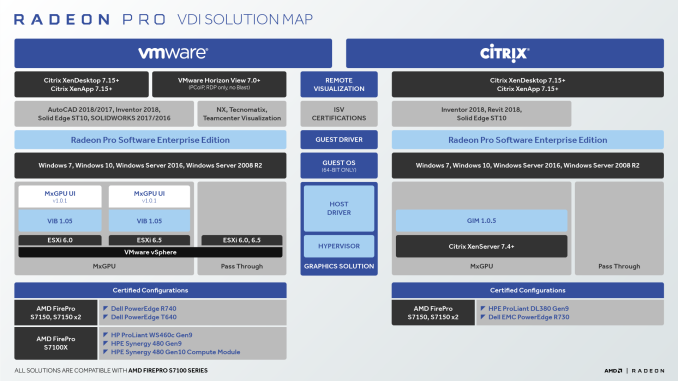
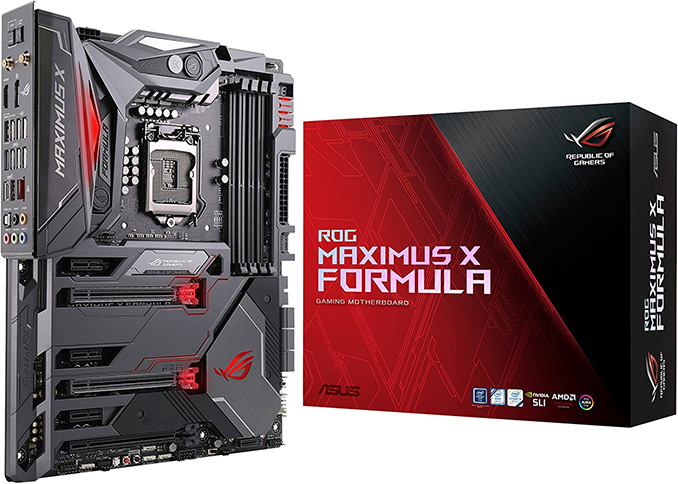
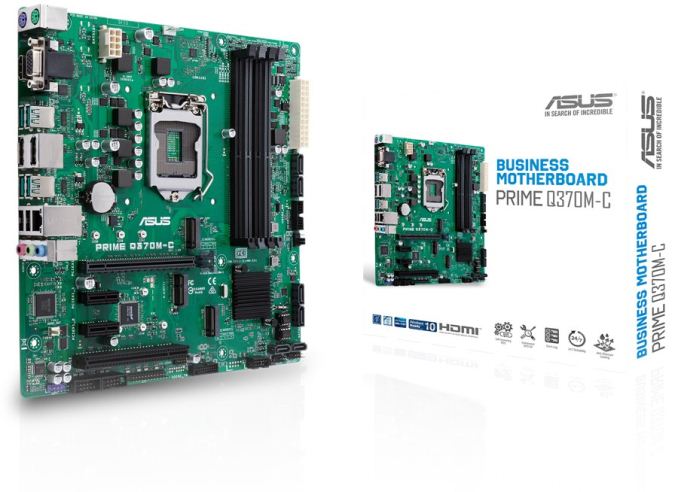
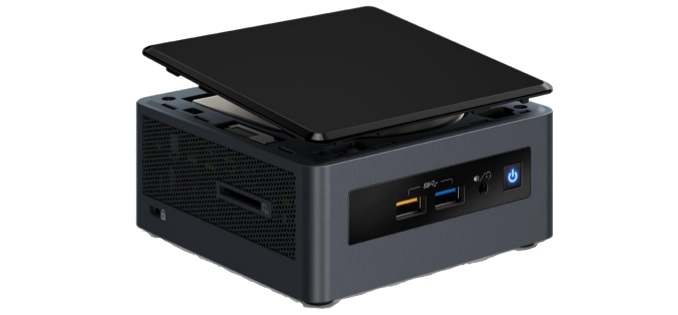
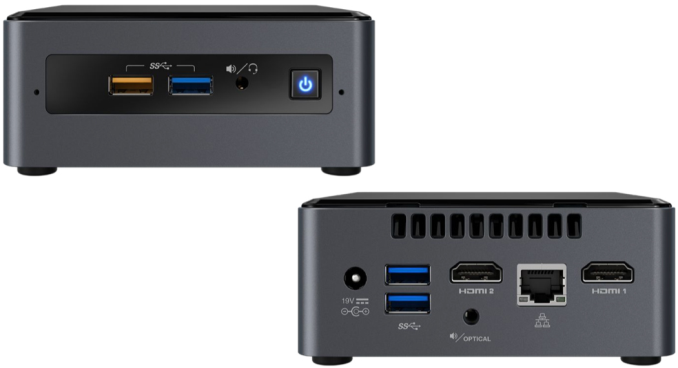
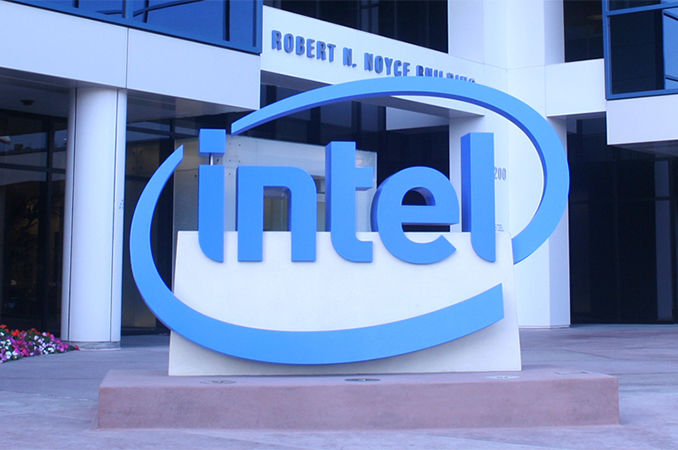
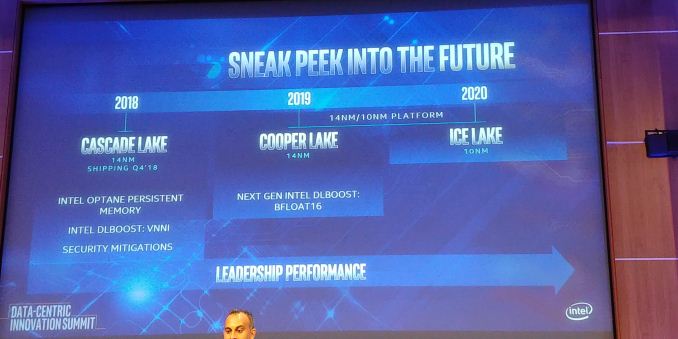
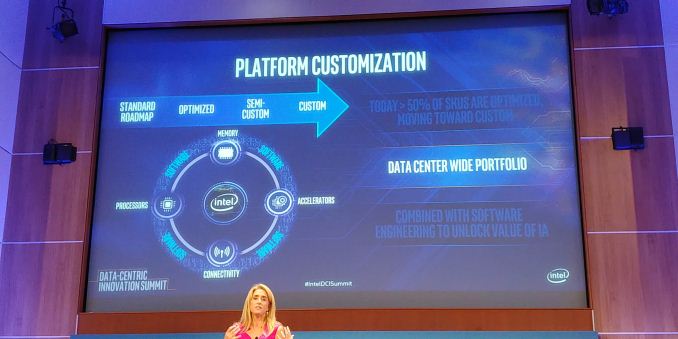
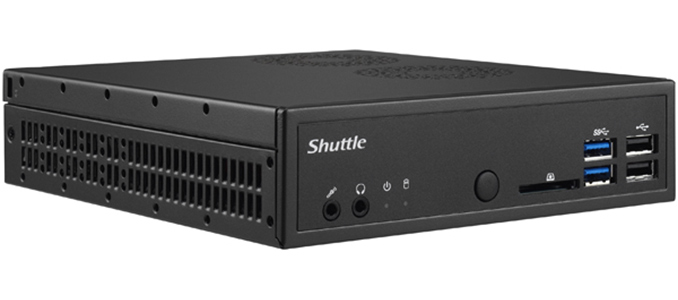

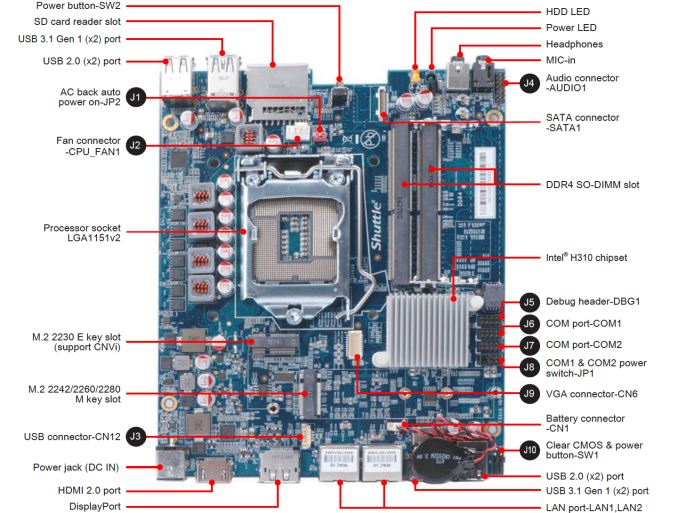
















Bookmarks